Your home’s furnace filter is small but mighty.
Though unassuming in stature, the furnace filter plays a vital role in the health of your home’s HVAC system and indoor air quality.
If you have a central heating, ventilation, and air conditioning system in your home, you can use the terms “air filter” and “furnace filter” interchangeably when referring to its components.
With central HVAC, both your air conditioner and furnace run through the same system and use the same filters.
Did you know that furnace filter direction plays a critical role in improving your home’s indoor air quality?
While a central HVAC system makes things simpler, you need to know what you’re looking for before purchasing your next filter.
Table of Contents
⭐ The Right Way to Install a Furnace Filter
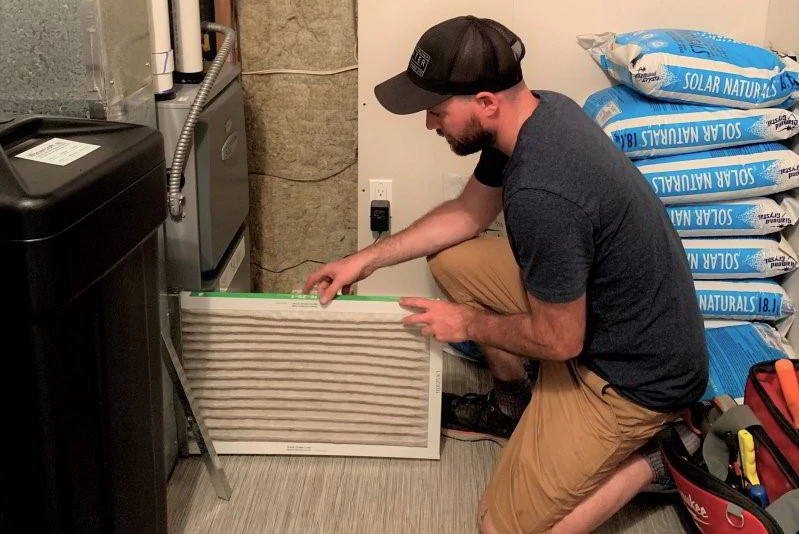
Exact filter locations vary by unit, but you can use the following as a general guide for locating your filter:
- For horizontal air conditioner units (air flows horizontally through the unit), find the filter on the side of the unit.
- For vertical upflow units (spent air comes in from the bottom of the unit), find the filter in the bottom door.
- For vertical downflow units (spent air comes in from the top of the unit), find the filters (these units usually require two filters) in the top door.
If you remember ahead of time, take note of the furnace filter direction before removing it from the unit. The right furnace filter direction is necessary to effectively trap airborne particles.
Set it aside after removing the old filter and grab your new filter.
Check along the cardboard edges of the filter for an arrow.
The arrow will indicate the air flow direction through your heating and cooling system.
The arrow on furnace filters must point toward the furnace system and away from the return duct.
The side of your filter showing a wireframe should face outward, away from the unit.
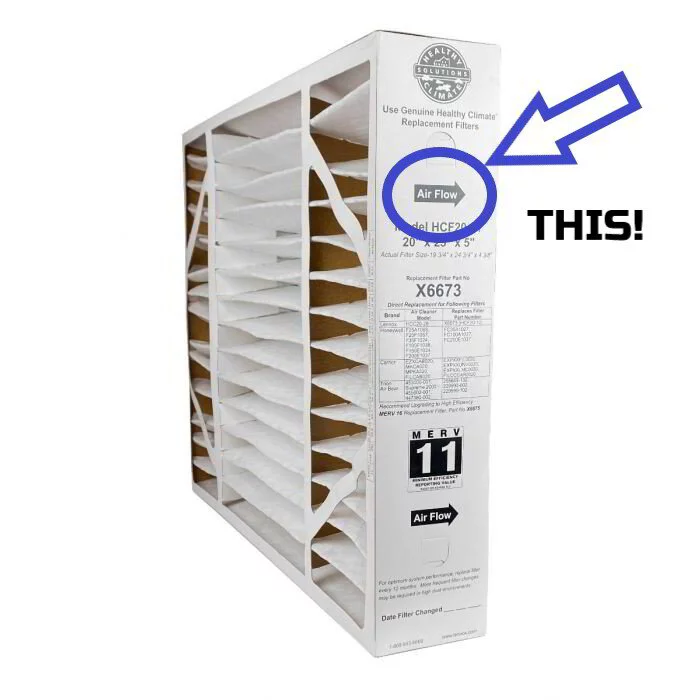
✅ PRO TIP: Do yourself a favor and mark it on the indoor air handling unit!
Take a permanent marker and draw your own airflow direction arrow on the HVAC unit near the furnace filter access door.
Draw it in the same direction the arrow on your next filter will face. Doing this will help you remember which direction the filter needs to go when you replace it in a few months.
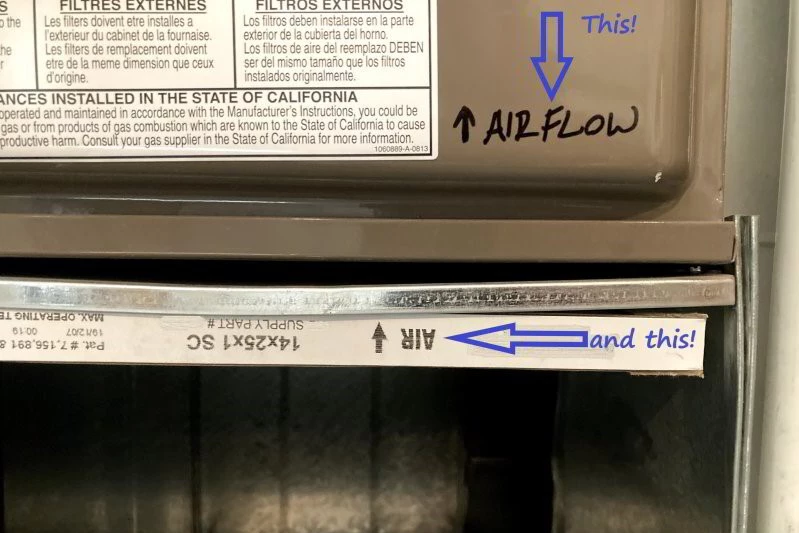
⭐ Which Way Does the Air Filter Go In?
The direction in which you install your air filter matters.
If you install your air filter or furnace filter opposite of what it should be, your HVAC system will be subject to unnecessary wear. Debris will build up in your filter more quickly, forcing your unit to work harder to heat or cool your home.
Heating and air conditioning play a crucial role in the comfort of your home.
Therefore, by installing your air furnace filters in the wrong direction, you are doing not only your air system a disservice; but you are also negatively impacting the well-being of everyone living under your roof.
Correct furnace filter direction keeps HVAC systems running more efficiently and effectively.
Incorrectly Installed Filter
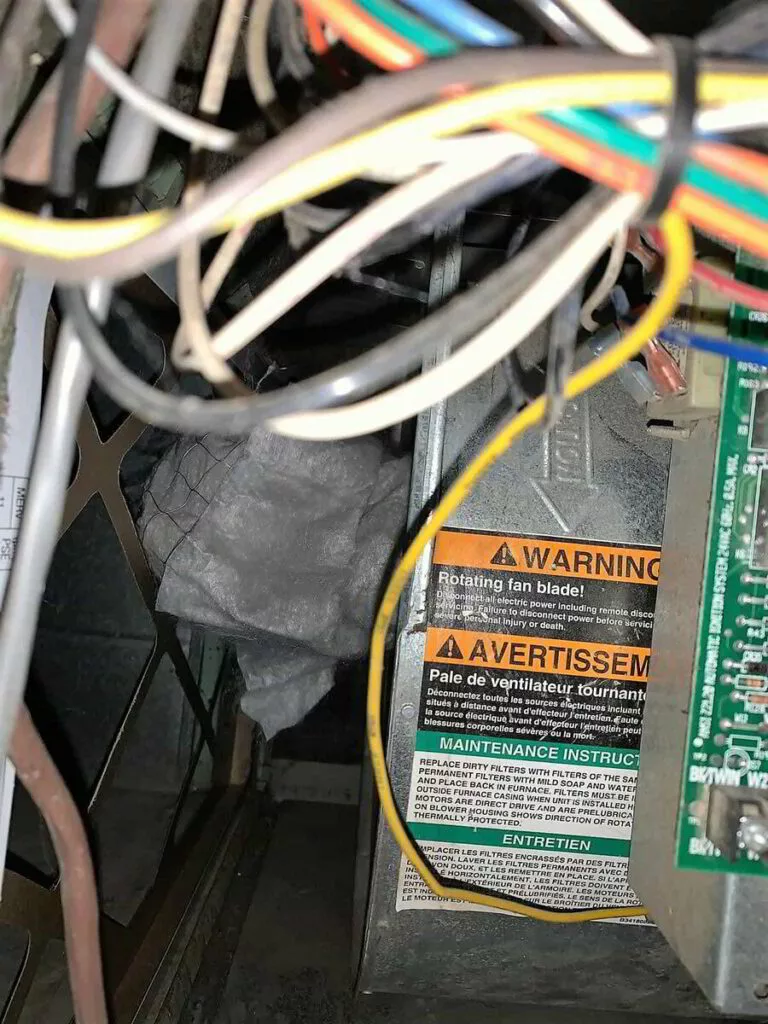
⭐ How Do I Know When My Filter Needs Replacing?
The furnace filter is often the first step in HVAC troubleshooting. If you notice a decrease in air flow from your returns, your filter may need replacing.
Return ducts bring in the air from your home and send it through the filter. Furnace filters trap many of the airborne particles that impede air flow and impact the quality of your home’s air.
Signs of a clogged air filter include a decrease in energy efficiency, which you will notice on your next utility bill.
You may also notice your air conditioning unit shutting down before it reaches the temperature you set on the thermostat, a decrease in the air pressure from the return duct, or cold air blowing when it should be warm and vice versa.
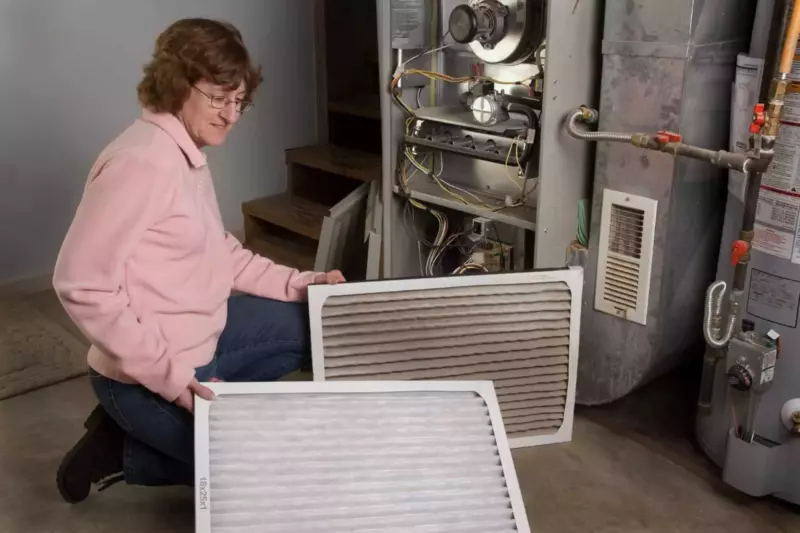
⭐ How Often Should I Change My Filter?
The general rule is that the thicker your air filter, the less often it needs replacing. However, the real answer depends on your home and lifestyle. Most filters need changing every 30 to 90 days.
Those with pets at home need to replace their air filter more often than those without pets due to the hair and dander they produce.
Changing your air filters should be part of your home’s routine maintenance program. Proper filter maintenance means you get more life out of your furnace and air conditioner, allowing you to hold off the prospect of installing a new HVAC system in the distant future.
⭐ What Are the Best Filters?
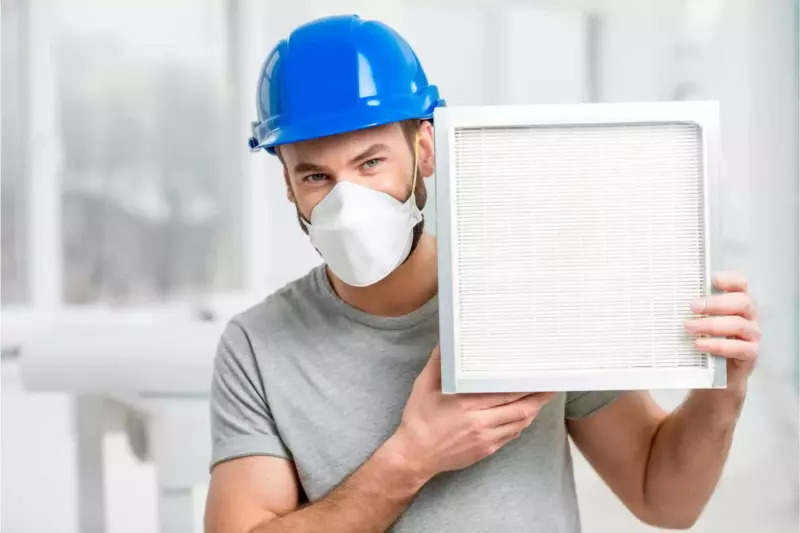
Furnace filter ratings score filters on their ability to capture air particles. This is known as the MERV (Minimum Efficiency Reporting Value) rating system.
Filters with higher MERV ratings are best at stopping particles from blowing out into your home.
✅ PRO TIP: Pleated filters are the best for your home. Learn more about indoor air quality and filters right here: Air Filter Guide
To determine the ideal filter for you, find the correct size that you need (this is shown on your current air filter or in your furnace or AC owner’s manual), compare MERV ratings and cost, and consider any special needs of your home.
Do you have pets? Do you struggle with allergies?
The best air filters keep your air flowing through the air handler without impediment, blowing the cleanest air out into your home.
⭐ Find the Right Filter For Your Home!

Get in touch with a Phyxter Contractor for same-day service for your home’s HVAC system.
Our techs offer friendly and professional service that you can rely on for all of your heating and cooling needs.
To learn more about filters and improve your indoor air quality, check out our next article: Air Filter Guide. MERV Filter Ratings and What They Mean For Homeowners.
If you live in the North or Central Okanagan region, you can find us in Vernon and Kelowna.

